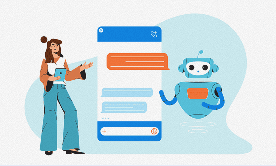In today’s AI-driven workplace, it’s no longer enough to know how to build — you must know how to communicate with both humans and machines.
The developers, data scientists, and engineers who rise fastest in this new era aren’t necessarily the ones who write perfect code — they’re the ones who can explain, collaborate, and prompt clearly.
Because when communication breaks down, even the smartest AI can’t save your project.
Why Communication Is the New Superpower
Every generation of tech has a defining skill:
“We can train anyone to tech — but we can’t teach them how to think and communicate clearly.”
That statement sums up the new truth of the tech world. Communication isn’t a “soft skill” anymore — it’s a strategic multiplier. It amplifies every technical skill you have.
In a world where teams are distributed across continents, and AI is embedded in every workflow, communication drives clarity, alignment, and trust.
It’s not about speaking fluently or writing emails — it’s about:
- Explaining your logic when debugging a system failure
- Structuring your thoughts so others (and AI) can follow them
- Documenting decisions so your future self — or an AI agent — can act on them
The developers who can think in text, words, and reason structures will always outperform those who hide behind perfect syntax and messy teamwork.
Talking to Humans vs. Talking to Machines
Here’s the fun paradox:
When you get better at communicating with humans, you automatically get better at communicating with machines.
Both require clarity, structure, and empathy — just in different ways.
When you structure a messy idea into precise prompts that make an AI tool like ChatGPT or Copilot give you exactly what you want, you’re not just prompting — you’re demonstrating communication intelligence.
That’s the new literacy.
And those who master it will lead projects, teams, and even machines.
How Developers Can Sharpen This Skill
If you’re a developer or learner trying to grow in this hybrid human+AI world, here’s how to intentionally strengthen your communication muscles.
- Document Your Thought Process
Don’t just code — narrate.
Every time you solve a problem, write down the why, not just the what. This habit trains you to think in structured layers, and it helps teammates and AI tools follow your reasoning. - Learn Structured Writing
Prepare or explain decisions.
It’s concise, powerful, and builds logical clarity.
Example:
Situation: Build time increased by 40%.
Action: Refactored deployment scripts.
Result: Reduced pipeline time to 6 mins. - Practice Daily Prompting
The more you experiment with AI tools, the better you understand how to phrase, sequence, and contextualize your thoughts.
Prompting isn’t about getting answers — it’s about training clarity in your own mind.
The Real-World Payoff
Research shows that teams with strong communication skills ship products 40% faster, make 32% fewer errors, and report 28% higher client satisfaction.
Why? Because clarity drives efficiency.
When everyone knows what to do, why it matters, and how their work fits in — automation actually works.
And in AI-driven workplaces, clarity in communication equals clarity in automation.
Beyond Technical Excellence
If you’re a student, a career switcher, or a working professional — the next leap in your career won’t come from adding one more framework to your stack.
It’ll come from learning how to articulate ideas, simplify complexity, and inspire confidence — in both people and intelligent systems.
That’s the real edge.
Because as AI evolves, the world will always need professionals who can connect, explain, and lead through words.
Final Thought
As ParallelEdu, we believe the future belongs to the communicative technologist — someone who can code, collaborate, and converse with AI effortlessly.
That’s why our programs combine technical mastery with communication excellence — helping you not just build products, but lead conversations that shape the future.
If you want to stand out in this AI-powered world, start by improving the one skill that multiplies every other: Communication.

